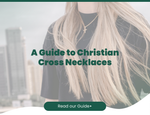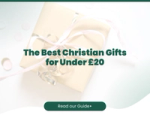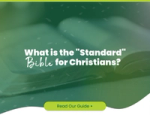Palm Crosses: nothing to do with palm oil
Les Ellison
As Palm Sunday approaches, churches are concerned to make sure their palm crosses are safe, chemical free and sustainably produced by people who will see real benefit without damaging their own environment.
Ethical and environmentally sound business practice is close to the heart of compassionate Christians. So the destruction of rainforest in much of South East Asia, to provide oils for the global cosmetics industry, is a serious concern.
Ethical palm cross manufacture
Irreplaceable rainforest, wildlife and ancient ways of life are being destroyed to create vast plantations of Elaeis guineensis - the African Oil Palm. Originating in tropical areas of that continent, this palm is mostly exploited as commercially grown hybrids.
Widespread monoculture, the unfairness of its trading, habitat destruction and degrading social impact are serious concerns for the Church. However, the industrialised Palm Oil plantations of southeast Asia have nothing at all to do with the rural and ethical manufacture of African Palm Crosses.
African Dwarf Palm and the Masasi
Palm crosses are nothing to do with the production of palm oil. African palm crosses are hand woven from the palm fronds of the African Dwarf Palm whose scientific name is Hyphaena Coriacia, native across the middle countries of Africa including southern Tanzania – home to the Masasi villagers.
Also know as the Molala, Lala Palm and Doum Palm, the source plant of African Palm Crosses is in the same biological family as the Oil Palm. Although it shares some of its characteristics, Oil Palms are not the native plants organically tended by the Masasi villagers.
Sustainable natural resource
Growing in low-altitude bush, Dwarf Palms often form mini forests of greyish green fan-shaped fronds. Rarely more that 5-7m tall, they can reach heights of up to 15m. New leaves grow out of a crown-heart that resembles the top pf a pineapple and is eaten as a vegetable known as 'gau'.
Dwarf Palm fruits are small with a tough shell around a thin, fibrous coat surrounding the seed. The pulp of the fruit can be pounded into pulp and baked into a sweet, gingery tasting bread.
The chief feature of the African Dwarf Palm is its long, tough and plentiful fern-like leaves. For as long as people have lived in the African forests and grasslands, African Dwarf Palms have supplied the raw materials for the manufacture of everyday items.
Self help for the poorest
In recent years, the western demand for ethnic handicrafts such as mats, bags and accessories woven from palm fronds have provided a new and much needed source of income for the villagers in some of Africa’s poorest and most deprived regions such as Southern Tanzania
Anything requiring strong, raw fibre can be woven or plaited from the stripped palm fronds. As a natural, non-endangered species, the African Dwarf Palm provides a natural, renewable, biodegradable and ethically sound material for the manufacture of African Palm Crosses.
Palm crosses and wildlife ecology
Dwarf Palms carefully tended for Palm Crosses provide natural homes for African palm swifts which nest underneath the leaves. Elephants feed on the crown shaped hearts while baboons and other animals eat and disperse the fruits.
African Palm Crosses for Eden.co.uk
All Masasi African palm crosses are hand woven without chemical treatment of the trees or their leaves. The absence of chemical treatment protects the Masasi village environment and makes the palm crosses safe for this Palm Sunday and ensures safe burnt ashes for next year’s Ash Wednesday.
In packs of 50 and 100 African palm crosses, Eden.co.uk African sourced palm crosses make a big difference to basic health and education provision in one of Africa’s most deprived and poverty hit districts.
Palm Crosses: the not-so-trivial files
Palm swifts have evolved a unique method of preventing the eggs from falling by gluing them in place with their saliva.
Latest Blogs

Gifts
Finding Your Symbol of Faith: A Guide to Christian Cross Necklaces
Looking for the perfect symbol of faith? Explore our guide to Christian cross necklaces, from rustic wooden designs and sturdy men's chains to elegant silver pendants.

Gifts
The Best Christian Gifts for Under £20
Looking for a meaningful gift that won't break the bank? Explore our guide to the best Christian gifts under £20, from inspiring journals to beautiful home decor.

Gift Guide
15 Confirmation Gift Ideas for Boys and Girls
Celebrating a confirmation? Discover 15 meaningful gift ideas for boys and girls, from youth Bibles and jewellery to inspiring journals and keepsakes.

Bible
30+ Powerful Quotes About the Bible (For Inspiration in 2026)
Looking for inspiration? Discover a curated collection of the most powerful quotes about the Bible, from famous historical figures to modern theologians and Scripture itself.

Bibles
What is the "Standard" Bible for Christians?
Is there an "official" Bible that all Christians use? We explain the difference between the NIV, KJV, and ESV, and help you find the standard text for your church or personal reading.

Bible
"I Keep Failing to Read the Bible" – 5 Tips to Make the Habit Stick
Do you start a Bible reading plan only to quit a few weeks later? Stop the cycle of guilt. Here are 5 psychological tips and practical changes to help you build a Bible habit that actually lasts in 2026.
